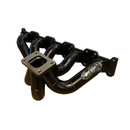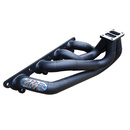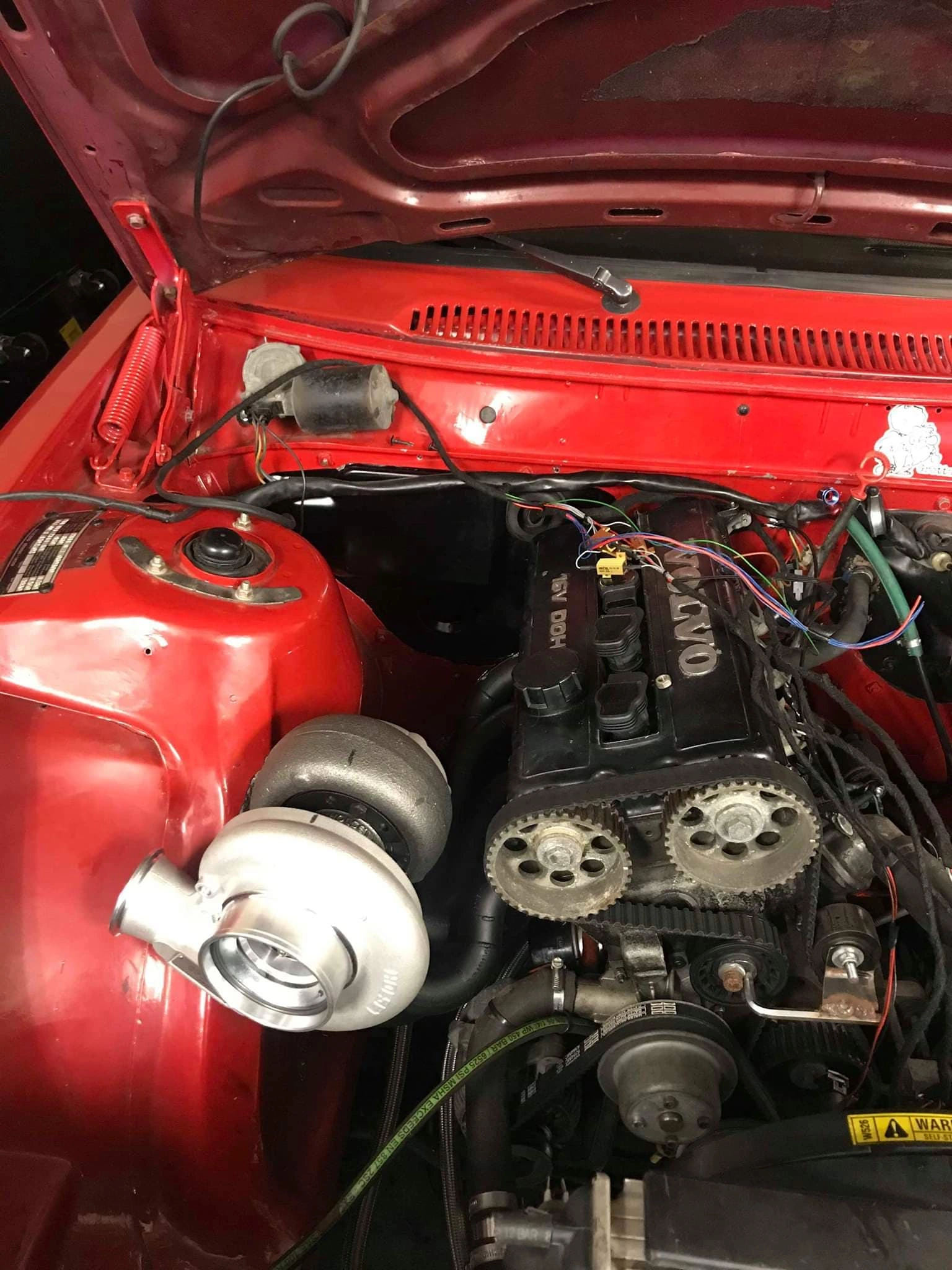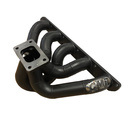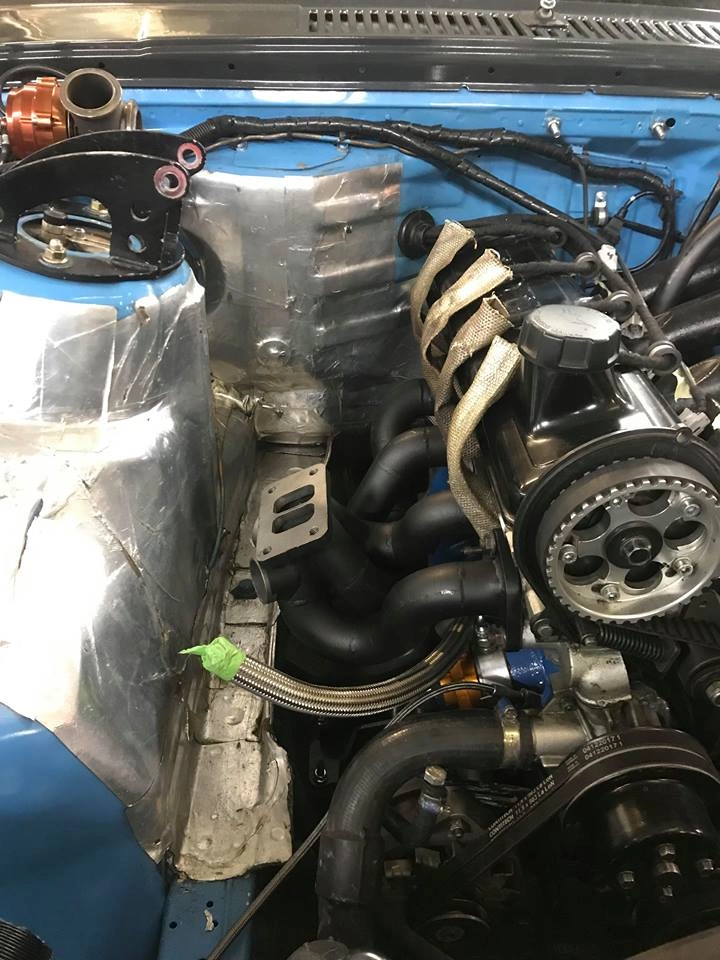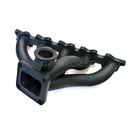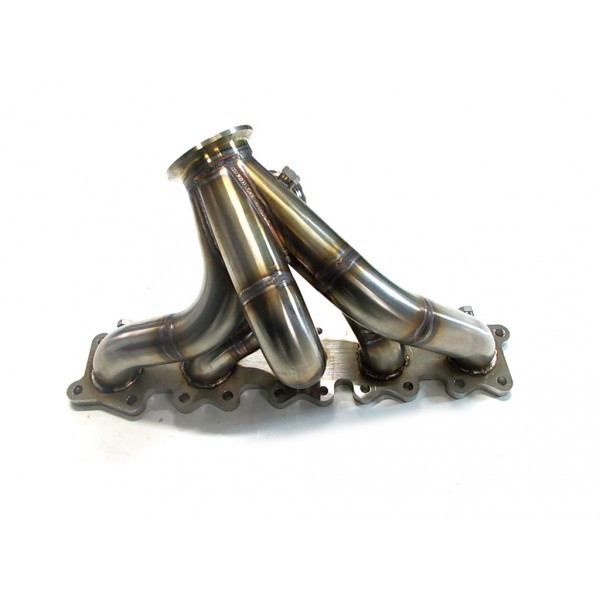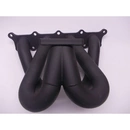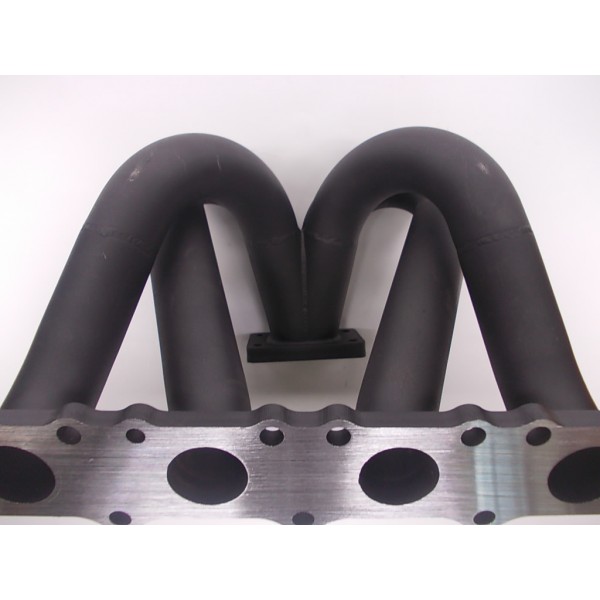Exhaust manifold
Custom made manifold for Volvo, Ford, Mitsubishi, BMW and more.
Our mild steel manifold built in 42,4x2,6mm pipes, who then blasted after welding on finally painted with a heat resistant paint before delivery.
Our stainless manifold we manufactured in stainless steel 321L 42,4x2mm, these welded with backing gas on the cleaned carefully for best results.
They should always be flexible pipes on the exhaust system and between wastegate & downpipe, to prevent passing the manifold burst.
Products
Turbo exhaust manifold
My manifold is cracking?
Always install a brace that holds up the turbo as it weighs a lot and when the manifold gets cold/hot every other time, there will be tension in the manifold. Most people don't use these braces and it still works, but the above tip is to minimize the risk of cracks in the manifold.
Wastegate with twin entry flange?
If you choose manifolds with wastegate and twin entry flange, you will get two pipes, one for each port. You mount the wastegate flange yourself so that the placement is correct.
Exhaust manifold material Pros and Cons
Mild steel pros
-Cheaper than SS
-Easier to manufacture
Mild steel cons
-Can be negatively affected on the inside and release material into the turbo
-Made of thicker material that is heavier
Stainless steel pros
-Can handle higher temperatures
-Better corrosion resistance than mild steel
-Can handle exhaust wrap better due to better corrosion resistance.
-Made of thinner material that is lighter
-Better looking pipes as they do not rust as mild steel ones.
Stainless steel cons
-Stainless is more expensive
-SS moves and brings tension when welding that later can result in cracks.
Note
Both materials can be found in a variation of quality. Make sure to get yours from a trusted source.
Increased engine power = High exhaust gas velocity
Things causing high gas velocity:
- Small piping
Smaller pipes result in higher gas velocity, which leads to a better turbo spool. However, this also means more back pressure at high gas flow. - Big engine
Big engine displacement will produce higher exhaust flow. - High RPM
High RPM will produce a higher exhaust flow. - Heat
Warm exhaust gas takes more room than cold, which increases the exhaust velocity.
Decreased engine power = High exhaust back pressure
High exhaust gas velocity will also produce back pressure, which reduces engine power at a certain level. Therefore, you must find the sweet spot before back pressure rises too much.
















































